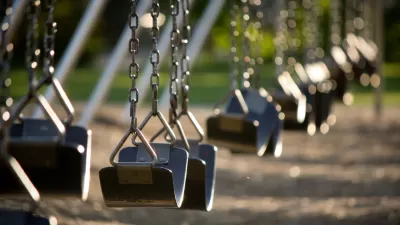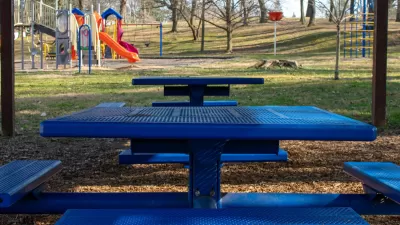An exploration of how adventure playgrounds enable freedom for children living in a world full of helicopter parents.

Alexandra Lange visits Kodomo Yume Park in Tokyo, where children encounter the elements of play, freedom, and risk, as an example of the adventure playground movement.
Adventure playgrounds have been in existence since the end of World War II, but the ideas behind the adventure playgrounds have more recently become a form of resistance to the practices of contemporary helicopter parents. Lange identifies the public realm as the panacea for the structured and insulated lives of kids these days.
The overprogrammed, oversterilized, overprotected lives of (some of) America’s youth are the result of a nexus of changes to work life, home life, and street life that have made bringing up babies into a series of consumer choices, from unsubsidized day care forward. It is the public realm—where the Tokyo playgrounds operate—that needs to change for American children to have unstructured afternoons and weekends, for them to bike and walk between school and the playground, to see packs of kids get together without endless chains of parental texts.
With that polemic in place, Lange tours the adventure playgrounds in Japan, providing insight into the design details and the activities of the children at play, while also critiquing the literature that has analyzed adventure playgrounds in the past.
FULL STORY: WHAT IT WOULD TAKE TO SET AMERICAN KIDS FREE

Planetizen Federal Action Tracker
A weekly monitor of how Trump’s orders and actions are impacting planners and planning in America.

Maui's Vacation Rental Debate Turns Ugly
Verbal attacks, misinformation campaigns and fistfights plague a high-stakes debate to convert thousands of vacation rentals into long-term housing.

Cuomo Is the Candidate of Both NIMBYs and Developers. What Gives?
In the New York City mayoral race, odd bedfellows align to preserve the housing status quo.

San Antonio and Austin are Fusing Into one Massive Megaregion
The region spanning the two central Texas cities is growing fast, posing challenges for local infrastructure and water supplies.

Charlottesville Temporarily Has No Zoning Code
A judge ordered the Virginia city to throw out its newly revised zoning code, leaving permitting for new development in legal limbo.

In California Battle of Housing vs. Environment, Housing Just Won
A new state law significantly limits the power of CEQA, an environmental review law that served as a powerful tool for blocking new development.
Urban Design for Planners 1: Software Tools
This six-course series explores essential urban design concepts using open source software and equips planners with the tools they need to participate fully in the urban design process.
Planning for Universal Design
Learn the tools for implementing Universal Design in planning regulations.
Heyer Gruel & Associates PA
JM Goldson LLC
Custer County Colorado
City of Camden Redevelopment Agency
City of Astoria
Transportation Research & Education Center (TREC) at Portland State University
Jefferson Parish Government
Camden Redevelopment Agency
City of Claremont





























